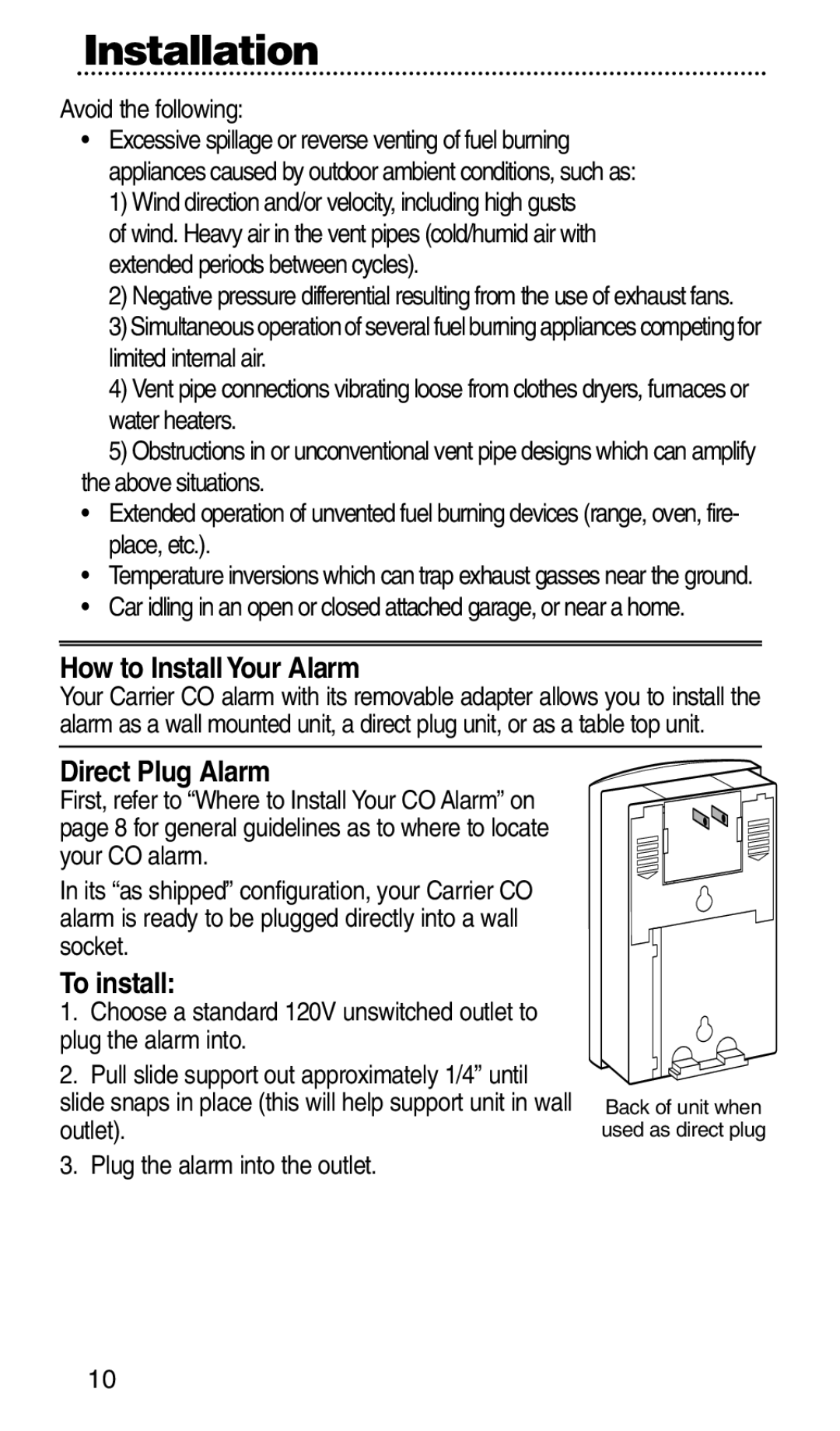
Installation
Avoid the following:
•Excessive spillage or reverse venting of fuel burning appliances caused by outdoor ambient conditions, such as: 1) Wind direction and/or velocity, including high gusts
of wind. Heavy air in the vent pipes (cold/humid air with extended periods between cycles).
2)Negative pressure differential resulting from the use of exhaust fans.
3)Simultaneousoperationofseveralfuelburningappliancescompetingfor limited internal air.
4)Vent pipe connections vibrating loose from clothes dryers, furnaces or water heaters.
5)Obstructions in or unconventional vent pipe designs which can amplify the above situations.
•Extended operation of unvented fuel burning devices (range, oven, fire- place, etc.).
•Temperature inversions which can trap exhaust gasses near the ground.
•Car idling in an open or closed attached garage, or near a home.
How to Install Your Alarm
Your Carrier CO alarm with its removable adapter allows you to install the alarm as a wall mounted unit, a direct plug unit, or as a table top unit.
Direct Plug Alarm
First, refer to “Where to Install Your CO Alarm” on page 8 for general guidelines as to where to locate your CO alarm.
In its “as shipped” configuration, your Carrier CO alarm is ready to be plugged directly into a wall socket.
To install:
1.Choose a standard 120V unswitched outlet to plug the alarm into.
2.Pull slide support out approximately 1/4” until slide snaps in place (this will help support unit in wall outlet).
3.Plug the alarm into the outlet.
Back of unit when used as direct plug
10
